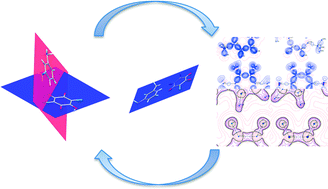High resolution X-ray and neutron diffraction studies on molecular complexes of chloranilic acid and lutidines†
Abstract
A total of 18 molecular complexes of chloranilic acid (H2CA) and various isomeric dimethylpyridine (lutidine) bases (B) in a 1 : 1 and 1 : 2 stoichiometric ratio have been prepared and characterised structurally; 10 of the structural determinations used high resolution crystallography. Since proton transfer between the acid and base occurs in all the crystalline forms, they are most appropriately described as salts between the lutidinium cations [BH+] and the chloranilate mono- and dianions [HCA−] and [CA2−]. The formation of bifurcated or non-bifurcated charge-assisted hydrogen bonds is described and the influence of the different functional groups on symmetrical or asymmetrical bifurcated hydrogen bond formation are investigated. Previously unreported salts of the composition [BH+][HCA−] with 2,3- and 3,5-lutidine, and [BH+]2[CA2−] with 2,3-, 2,4-, 2,5-, 2 ,6- and 3,4-lutidine are reported, as well as di- and trihydrate forms of the latter salt type with 2,4- and 3,4-lutidine respectively. For the 2,4- and 3,5-lutidines only, molecular complexes containing co-existing charged and neutral chloranilic acid molecules are also observed. The charge delocalisation in the chloranilate anions, which has an influence on the hydrogen bond distances, is confirmed by the deformation density plots, atomic net charge calculations and the density at the bond critical points. The QTAIM molecular graphs, which show the presence of bifurcated or non-bifurcated hydrogen bonds, are highly dependent on the exact refinement model. Lattice energy calculations based on the experimental charge densities also show a high dependence on the refinement strategy, while theoretical lattice energy calculations using different approaches provide no consistency in the rank order stabilities. We conclude that neither experimental nor theoretical approaches are currently sufficiently accurate to determine a definitive stability order for such isomeric complexes.



 Please wait while we load your content...
Please wait while we load your content...